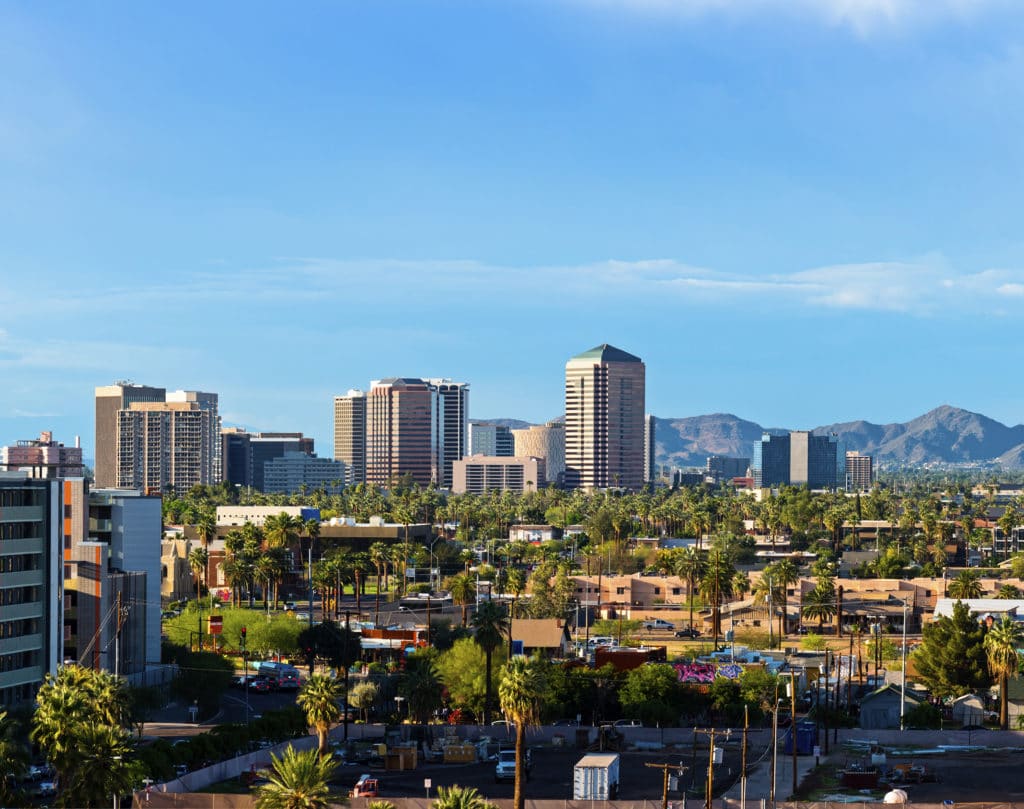
A Landmark Arizona Tax Reduction Bill
Arizona legislature continuously recognizes business-owner’s needs and adopts tax-burden policy that benefits regional innovation. With HB2822 signed into effect by Arizona Governor Ducey on March 30, 2022, the region’s legacy of strengthening the business community continues.
A Brief History of Arizona Property Tax

Arizona Property Tax References
Real Property Tax = Limited Property Value x Assessment Ratio x Tax Rate
Personal Property Tax = (Value x Depreciation Factor – Exemption) x Assessment Ratio x Tax Rate
Foreign Trade Zone (FTZ): Businesses located in a foreign trade zone or sub-zone are eligible for up to a 72.9 percent reduction in state real and personal property taxes.
HB2822 Property Valuation Comparison
This new legislation sets the full cash value of business and agricultural personal property initially classified during or after Tax Year 2022 to 2.5% of the property’s acquisition cost. Properties that can benefit from the new legislation include shopping centers, golf courses, manufacturers, and other personal property devoted to commercial or industrial use that is not classified elsewhere, agricultural property, and personal property in a foreign trade zone or military reuse zone.
The new legislation creates a reduction in property taxes by lowering the assessed value of the personal property. Currently a property’s valuation factor (“percent good”) is determined by the expected life of the property, with additional depreciation available for certain subclasses of property.
*Assumption based on Class 1 property with a 10-year life
| Class 1 DepreciationStandard | Class 1 Depreciationwith Additional Depreciation | Class 1 Depreciationwith HB2822 | |
|---|---|---|---|
Full Cash Value |
$500,000,000 |
$500,000,000 |
$500,000,000 |
Year 1 Valuation Factor |
90.0% |
22.5% |
2.5% |
Percent Good |
$450,000,000 |
$112,500,000 |
$12,500,000 |
Minus Standard Exemption ($225,572) |
$449,774,428 |
$112,274,428 |
$12,274,428 |
x Assessed Value (17.0%) |
$76,461,653 |
$19,086,653 |
$2,086,653 |
x Average Tax Rate (11.6%) |
$8,869,552 |
$2,214,052 |
$242,052 |
Savings |
– |
– |
$8,627,500 |
Foreign Trade Zone Savings
Foreign Trade Zones further increase the property tax savings. The personal property will still be depreciated at the 2.5% valuation factor, but will be assessed at 5% versus 17% for Class 1 property.
| Class 1 with HB2822 | FTZ (Class 6) with HB2822 | |
|---|---|---|
Full Cash Value |
$500,000,000 |
$500,000,000 |
Valuation Factor |
2.50% |
2.50% |
Percent Good |
$12,500,000 |
$12,500,000 |
Minus Standard Exemption (Class 1 property – $225,572) |
$12,274,428 |
$12,500,000 |
x Assessed Value |
$2,086,653 |
$625,000 |
x Average Tax Rate (12.17%) |
$253,946 |
$76,063 |
Savings |
$177,883 |
Scenario 1
Medium Manufacturer
$40M Real Property | $60M Personal Property
| Current Tax Liability (10 Years) | HB2822 Tax Liability (10 Years) | Difference | |
|---|---|---|---|
Non-FTZ |
$11,803,100 |
$8,187,416 |
$3,615,684 |
FTZ |
$3,635,909 |
$2,525,275 |
$1,110,634 |
FTZ Savings |
$8,167,191 |
$5,662,141 |
$2,505,050 |
Scenario 2
Large Manufacturer
$1.2B Real Property | $3.0B Personal Property
| Classification | Current Tax Liability (10 Years) | HB2822 Tax Liability (10 Years) | Difference |
|---|---|---|---|
Non-FTZ |
$433,662,238 |
$252,878,045 |
$180,784,193 |
FTZ |
$133,115,460 |
$77,583,750 |
$55,531,710 |
FTZ Savings |
$300,546,778 |
$175,294,295 |
$125,252,483 |
Frequently Asked Questions
Does HB2822 change the property tax rate?
No, HB2822 affects the total value of personal property assessed for tax, it does not change the tax rate.
How is this different than assessment ratio?
HB2822 does not impact real property or the assessment ratio. This bill exclusively applies to the depreciation schedule for personal property.
When does personal property qualify for HB2822?
Property purchased in tax year 2022 will qualify for HB2822. It will not apply retroactively to items purchased in prior years.
Get vital Greater Phoenix business news delivered to your inbox monthly.
Sign up for The Connected Place (TCP) newsletter.

